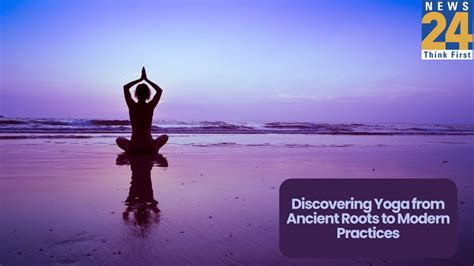Exploring Ancient Yoga Traditions vs Modern Practice: A Comprehensive Analysis
Yoga, an ancient discipline originating in India, has evolved dramatically over millennia. The essence of ancient yoga was deeply spiritual and philosophical, while modern yoga has adapted into a global phenomenon focusing largely on physical wellness and mental health. This article delves into the contrasts and overlaps between ancient yoga and its modern interpretations, exploring how the practice has been reshaped for contemporary society while retaining some of its core values.
Introduction: The Dichotomy Between Ancient and Modern Yoga
Yoga’s journey from the ashrams of ancient India to modern-day studios across the world reflects a significant shift in both its philosophy and execution. Where ancient yoga was a comprehensive spiritual discipline aimed at enlightenment, modern yoga has primarily evolved into a fitness practice with significant health benefits. Yet, many practitioners remain curious about how much of the ancient practice survives today, and what differentiates these two seemingly disparate forms of yoga.
Key Concepts: Defining Ancient and Modern Yoga
Ancient yoga, dating back over 5,000 years, was described in texts such as the Vedas and Upanishads, and later in the seminal Yoga Sutras by Patanjali. It emphasized a union of mind, body, and spirit, guiding practitioners toward self-realization and liberation (moksha). Modern yoga, on the other hand, is largely shaped by the commercialization of the practice in the West, where emphasis is placed on physical postures (asanas) for flexibility, strength, and stress relief.
Key Components of Ancient Yoga
- Ashtanga (Eight Limbs of Yoga): This philosophy forms the foundation of ancient yoga. It includes moral and ethical guidelines, physical postures, breath control (pranayama), and meditative practices aimed at achieving spiritual awakening.
- Meditation and Pranayama: Core practices in ancient yoga focused on controlling the mind and breath to achieve transcendence.
- Kundalini: A spiritual energy believed to reside at the base of the spine, which, when awakened through practice, leads to higher consciousness.
Key Components of Modern Yoga
- Hatha Yoga: In the West, modern yoga practices are often derived from Hatha Yoga, which emphasizes physical postures, breath, and sometimes meditation.
- Power Yoga: A fast-paced variation focusing on fitness and strength, often deviating from traditional spiritual components.
- Yoga for Stress Relief: Modern practices often include mindfulness techniques integrated with physical postures to promote mental well-being.
Historical Context: The Roots of Yoga
To understand the differences between ancient and modern yoga, it’s essential to look at the origins of yoga in ancient India. The practice began as a deeply spiritual journey that was closely tied to religious and philosophical teachings. Several periods marked its evolution:
Pre-Classical Period (Vedic Tradition)
The earliest mentions of yoga can be traced to the Rigveda, where the term ‘yoga’ was used to describe a method of attaining spiritual insight and self-realization. This era placed a strong emphasis on meditation and ritual practices.
Classical Period (Patanjali’s Yoga Sutras)
Patanjali’s Yoga Sutras, written around the second century BCE, formalized the concept of yoga into an eightfold path. This systematization gave yoga a philosophical and practical framework that has been referenced throughout its history.
Post-Classical Period (Tantric and Hatha Yoga)
In the post-classical period, yoga shifted from solely spiritual liberation to the exploration of body-energy dynamics, leading to practices such as Kundalini Yoga and Tantric Yoga. Hatha Yoga, which emphasized physical postures and breathing techniques, became more prominent.
Modern Period (Globalization of Yoga)
The modern period saw yoga’s introduction to the West, particularly during the 19th and 20th centuries, when figures like Swami Vivekananda and B.K.S. Iyengar popularized it. This era also saw the adaptation of yoga to fit Western ideals of health and wellness, transforming it into the largely physical practice recognized today.
Current State Analysis: Yoga in the 21st Century
In today’s world, yoga is practiced by millions worldwide. While the physical benefits are clear, there’s ongoing debate about whether modern yoga retains the spiritual depth of its ancient predecessor. Key trends shaping modern yoga include:
- Commercialization: Yoga has become a multi-billion-dollar industry, with accessories, teacher training, and luxury retreats dominating the market.
- Scientific Validation: Numerous studies have shown yoga’s effectiveness in reducing stress, improving flexibility, and promoting mental health.
- Hybrid Practices: Modern yoga often merges with other fitness trends, such as Pilates or strength training, diluting its original spiritual intent.
Practical Applications of Yoga
Both ancient and modern forms of yoga offer valuable practices for enhancing physical, mental, and emotional well-being. Here are some practical applications of yoga today:
- Mental Health: Yoga’s meditative aspects can help reduce anxiety and depression.
- Physical Fitness: Yoga improves flexibility, strength, and balance, with variations available for all fitness levels.
- Stress Management: Breath control and mindfulness techniques are central to managing daily stress.
Case Studies: Ancient vs Modern Practices in Action
To explore the effectiveness of ancient and modern yoga, let’s look at a few comparative case studies:
| Case Study | Ancient Yoga Approach | Modern Yoga Approach | Outcome |
|---|---|---|---|
| Mental Clarity and Focus | Ancient yoga focuses on meditation and breathwork to cultivate mental clarity and stillness. | Modern practices often combine mindfulness with physical exertion to calm the mind. | Both approaches result in enhanced mental clarity, but ancient techniques offer a more profound spiritual dimension. |
| Physical Flexibility | Physical postures in ancient yoga, though less varied, were focused on preparing the body for long meditations. | Modern yoga offers a wide array of asanas designed to stretch and strengthen muscles. | Modern yoga provides faster physical gains, but ancient practices offer more subtle, holistic benefits. |
| Spiritual Growth | Ancient yoga emphasizes a deep connection with the divine through meditation and ethical practices. | Modern yoga often lacks the spiritual teachings, focusing instead on mindfulness and physical health. | Ancient yoga clearly excels in fostering spiritual growth, while modern yoga supports mindfulness without deep spirituality. |
Stakeholder Analysis: Who Benefits from Yoga?
The modern yoga industry impacts a range of stakeholders:
- Practitioners: They gain physical and mental benefits, though spiritual fulfillment may be diluted in modern forms.
- Instructors: Modern teachers often balance between ancient teachings and commercial demands, sometimes sacrificing depth for accessibility.
- Health Industry: Medical professionals recognize the therapeutic benefits of yoga, particularly for stress and chronic conditions.
Implementation Guidelines: Integrating Ancient and Modern Yoga
Combining the strengths of both ancient and modern yoga can create a more comprehensive practice. Key guidelines include:
- Balance Physical and Spiritual Elements: Incorporate meditative practices alongside physical postures to create a more holistic approach.
- Focus on Breath Control: Make breathwork a central component, bridging the gap between physical and mental well-being.
- Honor the Ethical Guidelines: Integrate the moral and ethical dimensions from ancient texts to guide practitioners towards more meaningful experiences.
Ethical Considerations: The Commodification of Yoga
The commercialization of yoga raises ethical questions about authenticity and cultural appropriation. Westernization often removes the spiritual depth, and some argue that this dilutes the original purpose of the practice. Is it ethical to market yoga solely as a physical fitness tool when it has profound philosophical roots?
Limitations and Future Research
There are several limitations to the current understanding of yoga’s evolution:
- Over-commercialization: The commercialization of yoga may further distance the practice from its spiritual origins.
- Lack of Cultural Sensitivity: As yoga spreads globally, there’s a risk of further dilution of its cultural significance.
- Research Gaps: More studies are needed to explore the long-term effects of modern yoga on spiritual well-being and mental health.
Expert Commentary: Insights from Thought Leaders
Experts in the field continue to debate the balance between ancient tradition and modern adaptation. Some argue that the evolving nature of yoga is a testament to its resilience and ability to remain relevant, while others stress the importance of preserving its roots. The future of yoga may lie in a hybrid form that honors its spiritual heritage while adapting to contemporary needs.








